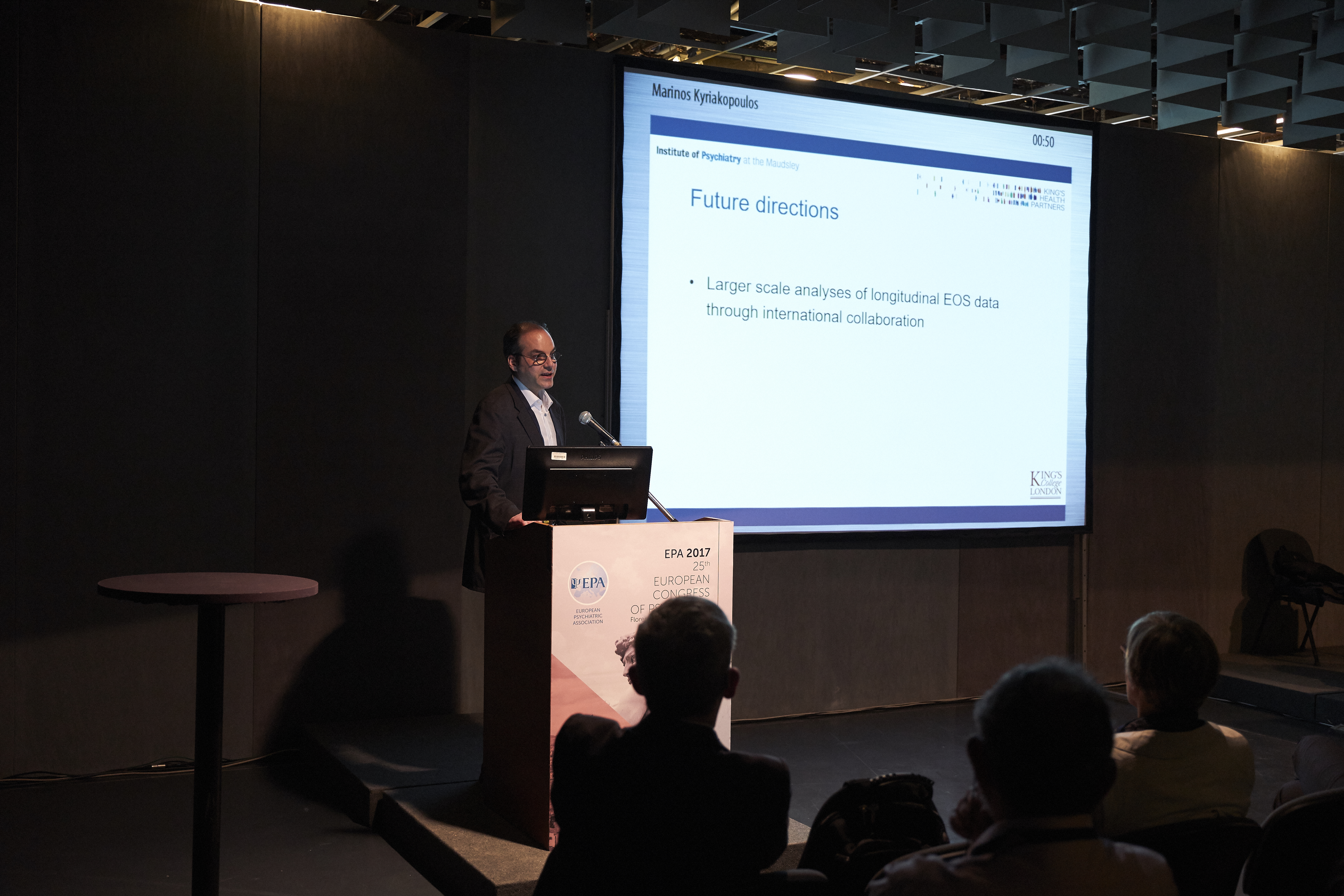



Rispetto agli adulti, le anomalie cerebrali corticali in giovani con psicosi ad insorgenza precoce (EOP - Early Onset Psychosis), sono meno indagate. Questo simposio ci ha dato maggiori nozioni in merito. Mentre la maggior parte dei cervelli sono flessibili in adolescenza, il cervello dei giovani con EOP non sem bra evolversi come dovrebbe. I risultati possono essere il deterioramento cognitivo e la prognosi infausta, associata alla condizione esistente.
Deficits in processing speed are evident in adolescents with EOP and may be a key feature of the disease. Anthony James and colleagues at the University of Oxford, UK, have been investigating frontostriatal disconnectivity in relation to cognitive function in a longitudinal study which compares 39 people with EOP and 24 adolescent controls matched for relevant variables – but not IQ, which was 20 points lower in the EOP group.
The general finding is one of decreased connectivity between the prefrontal cortex and striatum. And, in adolescent-onset schizophrenia, dorsolateral prefrontal cortex connectivity with the striatum correlates with IQ.
The connectivity data emerging from the longitudinal element of the study show very different patterns in the brains of adolescents who have had EOP. Connectivity has developed less than in controls. And Dr James has a vivid metaphor to describe this. In EOP patients, it as if some of the main motorways are lost during the two years following the episode of psychosis, with local routes of communication taking their place, perhaps in an effort to compensate. But the brain has not evolved as it should.
Sculpting the brain takes time
Subsequent discussion raised the question of why there should be loss in “motorway” tracts. The answer may lie in the fact that central hubs are connected over long distances while connections involving peripheral hubs are shorter. So it may simply be a result of inability to maintain contact in a brain that – for some reason – is not able to process energy sufficiently well to maintain long distance pathways. A possible culprit is disrupted insulin signalling.
Abnormal connectivity is also of interest to Marinos Kyriakopoulos, (King’s College, London, UK). He and colleagues have been using MRI to investigate the way grey matter diminishes and increases in the “back-to-front” wave that characterises normal adolescent brain development.
Usually, there is an increase in “frontalisation” of the fronto-cingulate-parietal network. And the increase in working memory that is generally seen in adolescence has been attributed to this. But adolescents who have experienced EOP do not show the same pattern of change.
Decreased integrity of white matter tracts connecting the posterior and anterior regions
Deficiencies in working memory seem to be a central feature of schizophrenia. Given that working memory relates to the temporary storage of goal-relevant information involved in planning and decision making, this finding may contribute to our understanding of pathogenesis.
The NORMENT study, described by Vera Lonning (University of Oslo, Norway), allows data from cohorts of Swedish and Norwegian EOP patients to be analysed together. Results suggest a decrease in cortical grey matter compared with healthy adolescent controls. This was evident, for example in the insula region – as has been seen in adult patients with earlier onset of psychosis – and in the medial region of the superior frontal gyrus, in areas associated with higher cognitive functions and self-awareness.
But heterogeneity among young people who develop EOP, defined as being under the age of 18, and the relatively small number of cases makes it difficult for individual centres to gather large datasets. Hence the need for collaboration.
This is evident in the ENIGMA project which is encouraging widespread participation. This aims initially to overcome problems with underpowered studies looking at brain changes. In the future, it will hopefully allow these changes to be correlated with symptoms and changes in symptoms over time.
Those interested are invited to contact Ingrid Agartz (ingrid.agartz at medisin.uio.no) or Dr.Tiril Gurholt (t.p.gurholt at medisin.uio.no).
Our correspondent’s highlights from the symposium are meant as a fair representation of the scientific content presented. The views and opinions expressed on this page do not necessarily reflect those of Lundbeck.